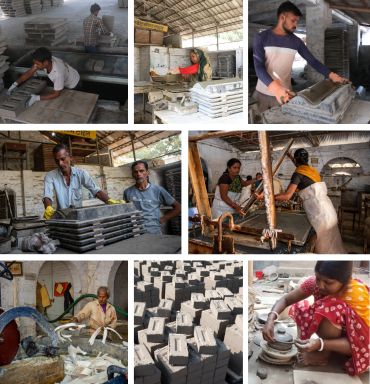
India has an opportunity to integrate decarbonisation strategies and circular economy principles in affordable housing development to meet sustainability standards and achieve high environmental performance in the built environment. This approach can simultaneously help generate livelihoods and new economic opportunities through innovative business models and productive utilisation of available secondary resources from industrial and agricultural wastes, and construction and demolition waste.
Further, by aligning with ongoing initiatives at the national level, including Mission LiFE (LiFEStyle For Environment), PMAY (Pradhan Mantri Awas Yojana), CITIIS (City Investments to Innovate, Integrate and Sustain), Smart City Mission, and others at the subnational level (for example, Jaga Mission, Shakti Mission, Mukta Mission in Odisha and Mumbai Climate Action Plan, Net-Zero targets, Maharashtra New Housing Policy in Maharashtra), India can pioneer new holistic models of sustainable, affordable housing development based on localised, participatory approaches and meet its commitments towards SDGs 7, 8, 9, 11, 12, 13 and NDCs.
Development Alternatives has been championing the cause of sustainable buildings for the last four decades. We are working to address supply and demand side bottlenecks in the construction sector value chain to facilitate a transition to low-carbon pathways for the sector by developing a sustainable building material market in Indian states.
DA's work in Bundelkhand focuses on enabling a circular economy and accelerating resource efficiency, primarily through material innovation, waste management, and green energy. Our technologies and methods in the region include:
LC3 Cement (Limestone Calcined Clay Cement)
This low-carbon cement technology reduces carbon emissions by 40% compared to traditional cement, offering a sustainable alternative for the construction industry.
Fly Ash and Good Bricks
These innovative building materials mitigate carbon emissions, utilising industrial by-products and cutting-edge technology to create durable, eco-friendly bricks.
Waste Management
Under Waste Management, DA has been working towards utilising construction waste as a building material that reduces adverse environmental impacts such as air pollution, land pollution etc.
At TARAgram Yatra 2024, Yatris will be able to:
Be a part of the transforming narratives of sustainable change that we are co-creating with the community!